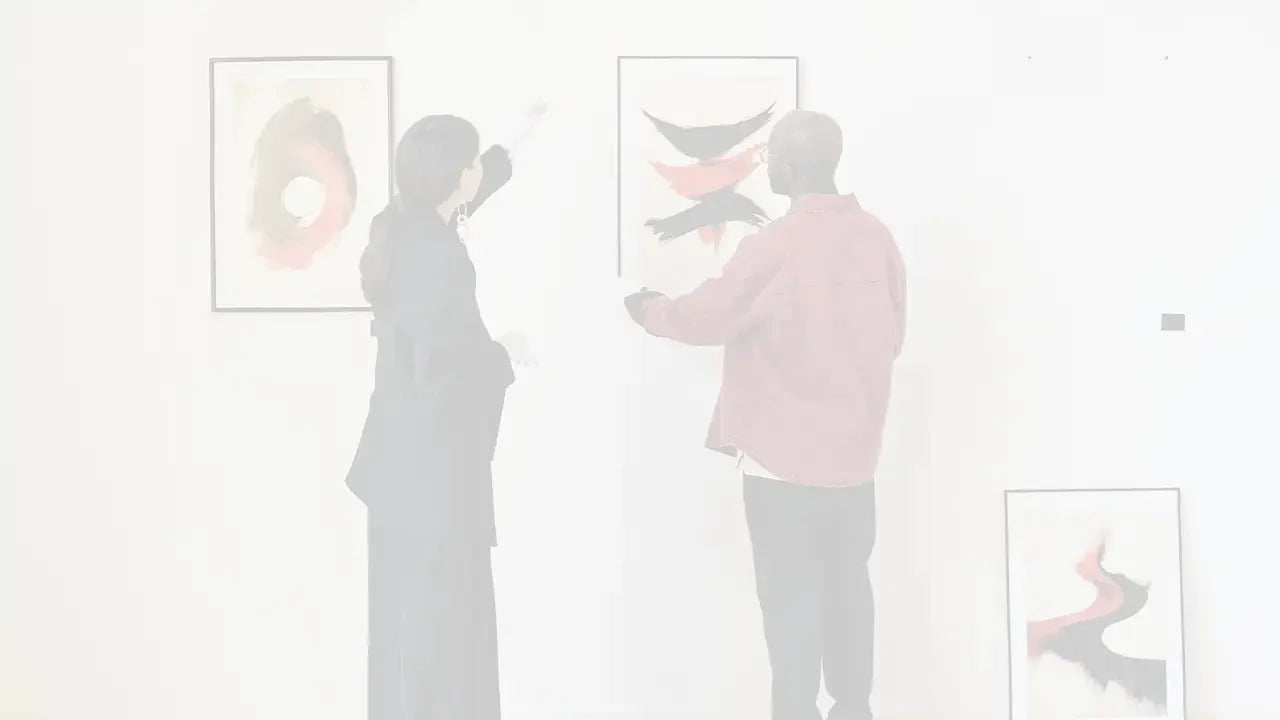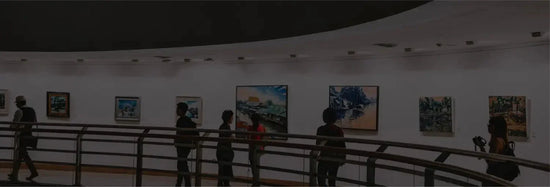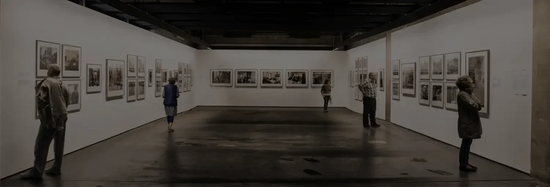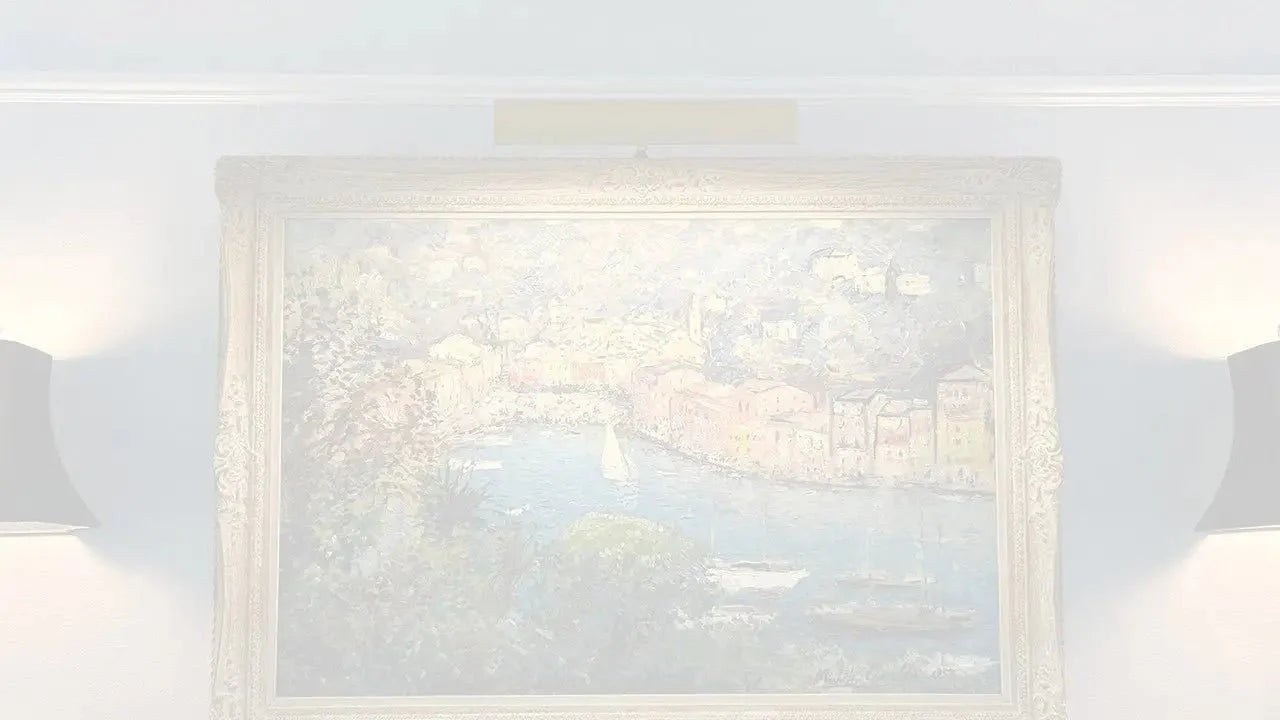We love a good art exhibit. They’re inspiring and soothing and peaceful…until you have to organize one yourself.
All of a sudden, you have to curate, plan the art handling, choose your hanging methods, shop for picture hangers and whoa...where do you even start?
Having a decade of experience allowed us to see how art exhibits work, so we’re happy to help you get started on organizing your art exhibit — starting with picture hanging hardware. Because how else can an art exhibit function without the very thing that holds the artwork up for folks to see?
Without further ado, let’s get right into it.
Curatorial Concept
Before diving into the hangers you need, you need to curate the art and come up with a well-grounded concept. Assess the art pieces you plan to display and brainstorm the overall message and theme you want to convey.
We may not be artists and curators ourselves, but knowing what you want to include in the exhibit is part of getting an idea on what picture hangers you will need.
Choosing the right hangers is based on four things:
- what type of artwork it is
- what’s on the back
- the weight of the artwork
- what you will be hanging the item on
Excellent art curation is the foundation of a successful art exhibit. This will be the basis of all succeeding steps, so make sure you curate the artwork first before doing anything else.
Marketing Strategy
You’ll want to be glued to your seat for this because at this stage, you’ll have to figure out how you want to promote your art exhibit. Think about how you want to approach people and attract them to drop by your exhibit.
Check out Art Business News’ 5 tips on Art Gallery Marketing:
- Get a good location.
- Invest in interior design.
- Promote the gallery before the grand opening.
- Continue promoting the gallery even after the opening event.
- Harness the power of word-of-mouth.
All these make a great impact on marketing your art gallery. It all boils down to knowing who your target audience is, where they are, and what social media platforms they’re on. Once you’ve got that going, you can start creating promotion materials ready for posting.
While you wait for the audience to come into picture, work on getting the next important thing in every art gallery: your picture hangers.
Art Hangers for Galleries
Now that we’ve got the brainstorming out of the way, it’s time to get physical. Let’s start planning what your exhibit should look like.
Do you want it to be minimalistic by using screws or French cleats behind the art? Or do you want it to look fancy by using a gallery system?
If you’re not sure what will work best with your art, we’re happy to recommend some picture hangers for your art exhibit. First up, a gallery system.
Gallery System
A gallery system is a flexible hanging method that adapts quickly to changes and movements.
It’s composed of a wall mounted track or moulding foot, wire cables, and picture rail hooks. A lot of museums and galleries use this system because of the frequent changes in layout. Having a lot of components means having different weight capacities. Which one should you follow?
The general rule when using gallery systems is to not exceed the lowest weight capacity. So, for example, even if your nylon loop cable can support up to 33 pounds, but your picture rail hook can only support 25 pounds, you should only hang things that are 25 pounds or less.
Here are our gallery system weight capacities for your reference:
- Nylon Loop Cable - 33 lbs
- Steel Loop Cable - 44 lbs
- Wide Picture Rail Hook - Maximum picture weight using 2 hooks per picture is 25 lbs
- Stand Alone Gallery Steel Cable - 25 lbs
- Stand Alone Gallery Nylon Cable - 25 lbs

Photo by: Sed Bona
Using a gallery system saves time moving things around and keeps your wall in pristine condition. You don’t have to keep drilling holes on the wall; you’ll only need picture rail or gallery wall channels, gallery rods or nylon or steel cables, picture rail hooks, and adjustable hooks.
Even though a gallery system is a bigger set up than sawtooth hangers and hooks, they are equally easy to install. Here’s how:
⚒️ How to Install a Gallery System
1. Install the track on the wall. Drill the holes needed on the areas where you want to position it. If you’re not drilling into a stud, then insert the wall anchors first.
2. If you’re using a system that’s similar to the video, install the wall brackets first using the screws and then click the track into place. If you’re using a moulding foot like this one, install it directly on the wall with the screws.
3. Attach your nylon or wire cables and picture hooks on the track.
4. Hang your frames and adjust.
A gallery system is best suitable for layouts that frequently change, this next one ensures the safety of your artwork.
Security Hanging Kits
Expensive and valuable artwork needs protection. Security hanging kits are anti-theft hardware that can support up to 15 pounds. They can also protect frames from falling, especially in earthquake-prone areas, by locking it in place.
These little guys are designed to lock the artwork into place by using a T-head screw and a special wrench. Because of this security feature, security hanging kits are used in many public places where security is a concern like schools, hospitals, hotels, restaurants, and of course in art exhibits.
French Cleats
For larger and heavier artwork, you can go for French Cleats. They are two metal or wood plates that are designed to interlock with each other to hang something on the wall securely. One cleat is attached on the wall, while the other one is attached on the back of the frame or object.
You can choose from Regular or Heavy Duty French Cleats. This hanging method provides a strong hold for objects weighing 15-100 pounds depending on the cleat length.
Regular French Cleats are generally used for small and light duty applications. For your reference, the following sizes can support frames under 50 pounds:
- 3 inches
- 6 inches
- 10 inches
- 12 inches
- 18 inches
On the other hand, you can use the following cleat sizes for small to medium picture frames, paintings, mirrors, paintings, wood frames, and shelves. The following sizes can support frames over 50 pounds:
- 12 inches
- 18 inches
Lastly, the cleat sizes below can hold up to 100 pounds or more. They’re suitable for hanging heavier objects like large-scale artwork and even storage units. The following sizes can be used for these applications:
- 18 inches
- 24 inches
- 30 inches
- 36 inches
- 45 inches
- 48 inches
- 90 inches
Art Labels
A good art exhibit doesn’t end with hangers. Nope, you need to think about art labels, too.
Art labels give context to the audience viewing the artwork. The labels have all the necessary information one would expect like the artist’s name, title and date of the artwork, size, duration (for video and audio artwork), medium used and motivation, and the price or credit listing of the artwork. Make sure to include these and place it beside the artwork.

Proper Lighting
Lighting is everything when it comes to art exhibits, galleries and museums. But because art is prone to heat and light damage, placing art under the sun or under aggressive lighting is not a good idea.
Here's advice from Park West Gallery to ensure longevity of your artwork and prevent color distortion and brittleness. There are three things you should avoid.
- Avoid placing artwork in direct sunlight.
- Don’t allow light to directly face the artwork.
- Avoid fluorescent lighting.
The first thing to consider about lighting (and the art exhibit as a whole) should always be the conditions that will best preserve the artwork. Aesthetics come in second. Remember this to keep the artwork in pristine condition.
Final Thoughts
Organizing an art exhibit is a lot of work behind the scenes, and the safety and condition of the art continues to be the top priority that drives all the other decisions in these situations. That said, choosing the correct art hangers literally and figuratively carry the weight of the art and the exhibit. Just keep these tips in mind and you’re on your way to a successful event!









Leave a comment (all fields required)